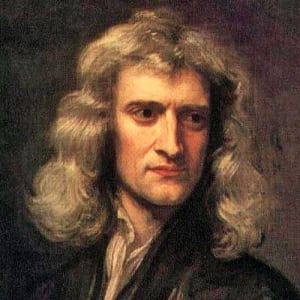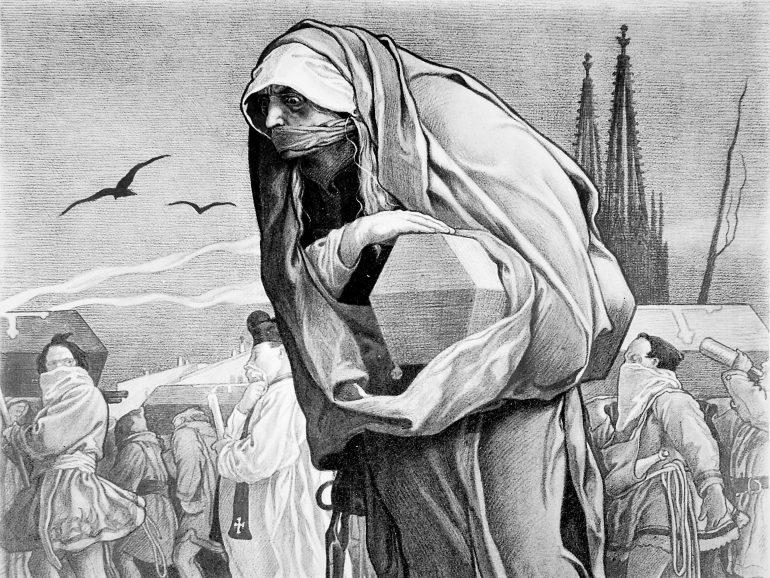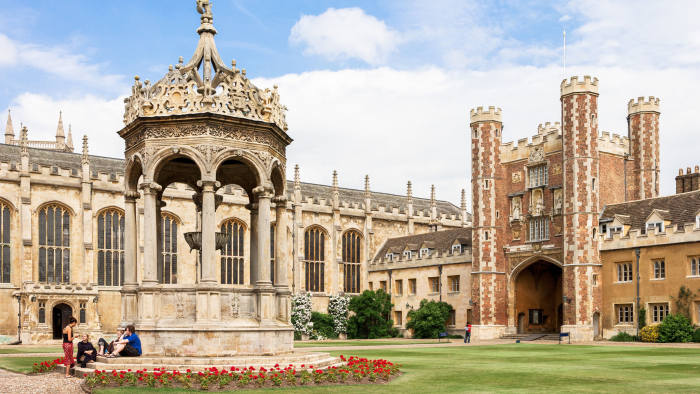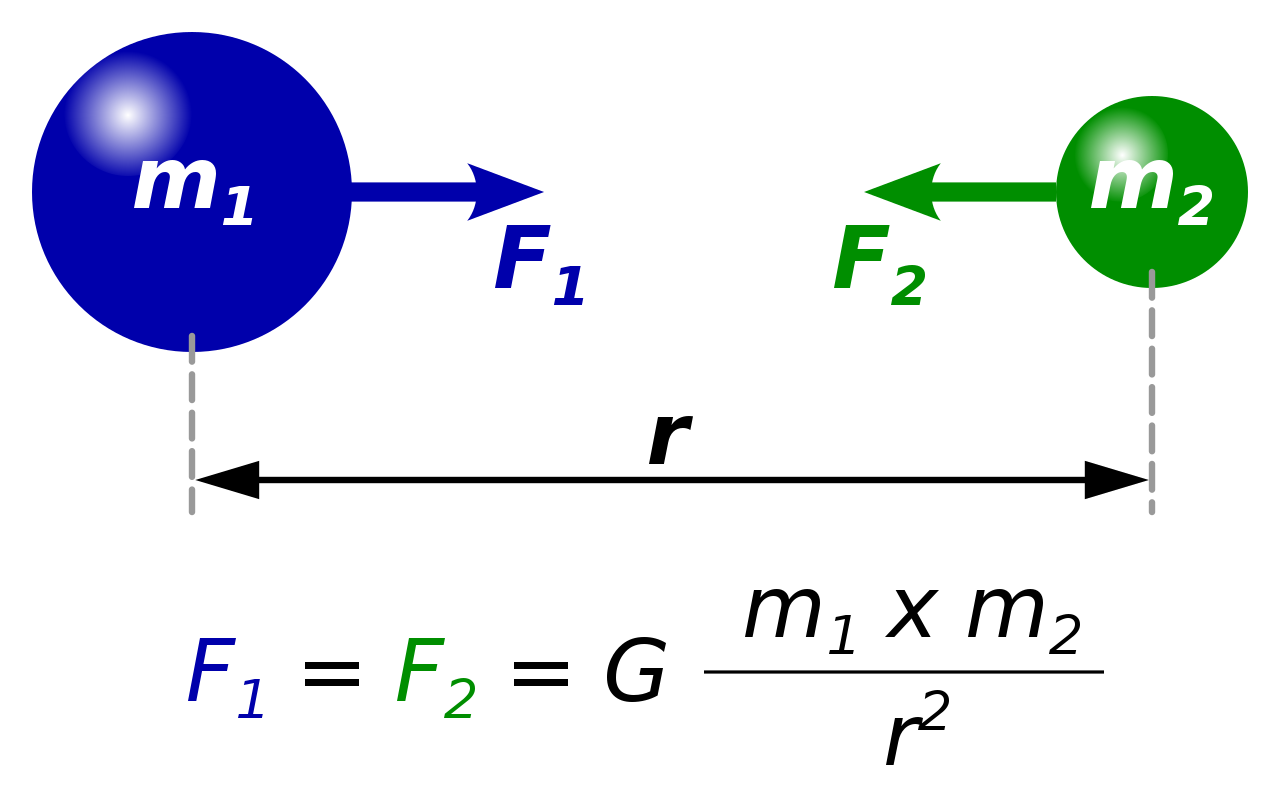Study Guide: Isaac Newton

Isaac Newton (1643 - 1727 CE)
Sometimes called the father of modern science, Isaac Newton revolutionized our understanding of the world. He was a Renaissance Man with major accomplishments in many fields, including astronomy, optics, physics and mathematics. Newton gave the world revolutionary new theories on gravity, planetary motion and optics.
With the publication of Philosophiae Naturalis Principia Mathematica in 1687, Newton laid the groundwork for modern physics. The publication become known as the “first great unification”, as it unified our understanding of gravity on Earth with the behavior of planets, solar systems, and stars. This publication cemented Newton’s position as one of the leading scientists of all time
Early Life
Newton was born on January 4, 1643, in Woolsthorpe, Lincolnshire, England. He never knew his father, who had died three months before he was born. Newton’s own chances of survival seemed slim. He was a premature and sickly infant that some thought would not live long.
Newton was dealt another blow when he was only three years old. His mother, Hannah, remarried, and his new stepfather, the Right Reverend Barnabas Smith, wanted nothing to do with the child. This was a time when women and children has no rights, and his mother had no choice but to honor the wishes of her new husband. The child was left with his maternal grandmother. The loss of his mother left Newton with a lingering sense of insecurity that stayed with him for the rest of life.
Education
Newton was enrolled at the King’s School in Grantham, a town in Lincolnshire, where he lodged with a local apothecary (pharmacist). Here, he was introduced to the fascinating world of chemistry and began his livelong appreciation of science.
At the age of 12, his mother pulled him out of school to have him tend the family farm. Newton failed miserably at farming, as he found the work boring and monotonous. He was soon sent back to school to finish his basic education.
Perhaps sensing the young man’s abilities, his uncle, a graduate of the University of Cambridge’s Trinity College, persuaded Newton’s mother to have him enter the university. Newton financed his education by working as a waiter and taking care of the rooms of wealthier students.
Cambridge and the Scientific Revolution
When Newton arrived at Cambridge, the Scientific Revolution was in full force. The heliocentric (Sun at the center) view of the universe—theorized by astronomers Nicolaus Copernicus and Johannes Kepler, and refined by Galileo—was already well known. The philosopher René Descartes had begun to formulate a new concept of nature as an intricate, impersonal and inert machine that humans could learn and understand through reason alone.
At the time, Cambridge still followed the ancient Aristotelian and geocentric (Earth at the center) view of the universe, and science was still studied in qualitative (descriptive) rather than quantitative (measurable) terms. During his first three years at Cambridge, Newton was taught the standard curriculum, but he was fascinated with the newer ideas.
In his spare time he read the modern philosophers. The result was a less-than-stellar performance in collage. Clearly, the disdain was two-way. Newton’s groundbreaking book, Principia begins:
“A stirring freshness in the air, and ruddy streaks upon the horizon of the moral world betoken the grateful dawning of a new ora. The days of a driveling instruction are departing. With us is the opening promise of a better time…"
Newton kept a second and secret set of notes, entitled “Quaestiones Quaedam Philosophicae” (“Certain Philosophical Questions”). The “Quaestiones” reveal that Newton had already discovered a new conception of nature that would soon provide a solid theoretical framework for the Scientific Revolution. He completed his bachelor’s degree at Cambridge University’s Trinity College in 1665 and wanted to continue his studies, but an epidemic of the bubonic plague soon altered his plans. The university closed its doors as the disease began its deadly sweep through London. During the first seven months of the outbreak, roughly 100,000 London residents died.
The Plague and the Apple

During the time of the Great Plague, Newton stayed on the family farm. It was during this 18-month break from being a student that Newton conceived many of his most important insights—including the method of infinitesimal calculus, the foundations for his theory of light and color, and the laws of planetary motion—that eventually led to the publication of his physics book Principia and his theory of gravity.
Legend has it that he experienced his famous inspirations about gravity by observing a falling apple. It is said that Newton was sitting under an apple tree when an apple fell to the ground, possibly also hitting him on the head. This most famous “bonk on the head” led him to wonder why the apple fell straight down and not at an angle. Consequently, he began exploring theories of motion and gravity.
Return to Cambridge
Slowly, his fortunes improved as his original ideas were noticed by others. Newton received his Master of Arts degree in 1669, before he was 27. During this time, he came across Nicholas Mercator’s published book on methods for dealing with infinite series. Newton quickly wrote a treatise, De Analysi, explaining his own wider-ranging results. He shared this with his friend and mentor Isaac Barrow, but didn’t include his name as author.
Newton’s first major achievement was designing and constructing a reflecting telescope in 1668. As a professor at Cambridge, Newton was required to deliver an annual course of lectures and chose optics as his initial topic. He used his telescope to study optics and help prove his theory of light and color.
The Royal Society asked for a demonstration of his reflecting telescope in 1671, and the organization’s interest encouraged Newton to publish his notes on light, optics and color in 1672. These notes were later published as part of Newton’s Opticks: Or, A treatise of the Reflections, Refractions, Inflections and Colours of Light.
In June 1669, Barrow shared the manuscript with British mathematician John Collins. In August 1669, Barrow identified its author to Collins as “Mr. Newton … very young … but of an extraordinary genius and proficiency in these things.” Newton’s work was then brought to the attention of the mathematics community for the first time.
Newton’s Discoveries
- Newton made many significant discoveries in optics, the physics of motion and mathematics.
- He theorized that white light was a composite of all colors of the visible spectrum, and that light was composed of particles.
- His momentous book on physics, Principia, contains information on nearly all the essential concepts of physics except energy, helping him explain the Laws of Motion and the Theory of Gravity.
- Along with Leibniz, Newton developed the modern mathematics of calculus.
- In 1687, he published his most acclaimed work, Philosophiae Naturalis Principia Mathematica (Mathematical Principles of Natural Philosophy), which is the single most influential book on physics.
- In 1705, he was knighted by Queen Anne of England, making him Sir Isaac Newton.
Laws of Motion
In 1687, following 18 months of intense and effectively nonstop work, Newton published Philosophiae Naturalis Principia Mathematica (Mathematical Principles of Natural Philosophy), often simply called Principia. Principia is the single most influential book on physics, and possibly of all science. Its publication immediately raised Newton to international prominence. Principia offers an exact quantitative description of bodies in motion, with three basic but important laws of motion:
First Law of Motion (Inertia)
An object at rest remains at rest, and an object in motion remains in motion at constant speed and in a straight line unless acted on by an unbalanced force.
Second Law of Motion (Force)
The acceleration of an object depends on the mass of the object and the amount of force applied.
\begin{align} \textit{Force } &= \textit{ Mass } \times \textit{ Acceleration} \\\ F &= m \times a \end{align}
Third Law of Motion (Action and Reaction)
For every action, there is an equal and opposite reaction. If object A exerts a force on object B, object B also exerts an equal and opposite force on object A. In other words, forces result from interactions.
Law of Universal Gravitation
Newton’s three basic laws of motion outlined in Principia helped him arrive at his theory of gravity.
These laws helped explain not only elliptical planetary orbits but nearly every other motion in the universe: how the planets are kept in orbit by the pull of the sun’s gravity; how the moon revolves around Earth and the moons of Jupiter revolve around it; and how comets revolve in elliptical orbits around the sun.
They also allowed him to calculate the mass of each planet, calculate the flattening of the Earth at the poles and the bulge at the equator, and how the gravitational pull of the sun and moon create the Earth’s tides. In Newton’s account, gravity kept the universe balanced, made it work, and brought heaven and Earth together in one great equation.
Equation for the Law of Universal Gravitation
Newton’s law of universal gravitation states that two objects attract each other with a force of gravitational attraction that’s proportional to their masses and inversely proportional to the square of the distance between their centers.
$$ F = G \frac{m_1m_2}{r^2} \text{,}$$where:
- $F$ is the force between the masses;
- $G$ is the gravitational constant ($6.674 \times 10^{−11} m^{3} \times kg^{−1} \times s^{−2}$);
- $m_1$ is the first mass;
- $m_2$ is the second mass;
- $r$ is the distance between the centers of the masses.
Competition and Conflict
Not everyone was enthusiastic about Newton’s discoveries in optics and 1672 publication of Opticks: Or, A treatise of the Reflections, Refractions, Inflections and Colours of Light. Among the dissenters was Robert Hooke, one of the original members of the Royal Academy and a scientist who was accomplished in a number of areas, including mechanics and optics. While Newton theorized that light was composed of particles, Hooke believed it was composed of waves. Hooke quickly condemned Newton’s paper in condescending terms, and attacked his methodology and conclusions.
Hooke was not the only one to question Newton’s work in optics. Renowned Dutch scientist Christiaan Huygens and a number of French Jesuits also raised objections. But because of Hooke’s association with the Royal Society and his own work in optics, his criticism stung Newton the worst. Unable to handle the critique, he went into a rage—a reaction to criticism that was to continue throughout his life. Newton denied Hooke’s charge that his theories had any shortcomings and argued the importance of his discoveries to all of science. The exchange grew more acrimonious, and soon Newton threatened to quit the Royal Society altogether. He remained only when several other members assured him that the Fellows held him in high esteem.
The rivalry between Newton and Hooke would continue for years. Finally, in 1678, Newton suffered a nervous breakdown. The death of his mother the following year caused him to become even more isolated, and for six years he withdrew from the world. During this time, Newton returned to his study of gravitation and the planets. Ironically, the ideas that put Newton on the right direction came from Robert Hooke.
In 1679, Hooke had brought up the question of planetary motion, suggesting that a formula involving the inverse squares might explain the attraction between planets and the shape of their orbits. Hooke’s idea was incorporated into Newton’s work on planetary motion.
In early 1684, in a conversation with fellow Royal Society members Christopher Wren and Edmond Halley, Hooke made his case on the proof for planetary motion. Both Wren and Halley thought he was on to something, but pointed out that a mathematical demonstration was needed.
In August 1684, Halley visited Newton, who was coming out of his seclusion. Halley idly asked him what shape the orbit of a planet would take if its attraction to the sun followed the inverse square of the distance between them (Hooke’s theory).
Newton knew the answer, due to his concentrated work for the past six years, and instantly replied, “An ellipse.”
Newton claimed to have solved the problem some 18 years prior, during his break from Cambridge and the plague, but he was unable to find his notes. Halley persuaded him to work out the problem mathematically and offered to pay all costs so that the ideas might be published.
Upon the publication of the first edition of Principia in 1687, Robert Hooke immediately accused Newton of plagiarism, claiming that he had discovered the theory of inverse squares and that Newton had stolen his work. The charge was unfounded, as most scientists knew, for Hooke had only theorized on the idea and never found a mathematical proof.
Old Age and Death
By the end of his life, Newton was one of the most famous men in England, his pre-eminence in matters of science was unchallenged. He had also become wealthy, and invested his income wisely. He had enough to make sizable gifts to charity and leave a small fortune in his will. Whether he was happy or not is another question. He never made friends easily, and in his later years his peculiar combination of pride, insecurity, and distraction interfered with his relationships. He never married, and lived as the “monk of science,” having channeled all his energy into his work.
In later life, he ate mainly vegetables and broth, and was plagued by a stone in the bladder. In 1725 he fell ill with gout, and endured hemorrhoids the following year. Meanwhile, the pain from his bladder stones grew worse, and on March 19, 1727, he blacked out, never to regain consciousness. He died on March 20, at the age of eighty-five, and was buried in Westminster Abbey. His funeral attended by all of England’s most eminent, and his coffin was carried by those who fancied themselves to be “noblemen.” It was, as a contemporary noted, a funeral fit for a king.
Legacy
Newton’s fame grew after his death, as many of his contemporaries proclaimed him the greatest genius who ever lived. This may be a slight exaggeration, but his discoveries had a huge impact on Western thought and the modern world.
Newton’s Law of Gravitation has since been superseded by Albert Einstein’s Theory of General Relativity, but it continues to be used as an excellent approximation of the effects of gravity in most situations. Relativity is required only when extreme accuracy is needed, or when dealing with very strong gravitational fields, such as near very massive and dense objects (such as Black Holes), or at relatively small distances (such as Mercury’s orbit around the Sun).
In time, Newton was proven wrong on some of his key assumptions. In the 20th century, Albert Einstein overturned Newton’s concept of the universe, stating that space, distance and motion were not absolute but relative and that the universe was more fantastic than Newton had ever conceived. Einstein showed that space and time are one fabric, now known as “space-time,” and that the universe was a larger and far more fantastical place than Newton could have dreamed.
And yet, perhaps these later discoveries would not have surprised the great scientist. As an old man, when asked for an assessment of his achievements, Newton replied:
Vocabulary
| # | Term | Type | Definition |
|---|---|---|---|
| 1 | maternal | ||
| 2 | revolutionized | ||
| 3 | premature | ||
| 4 | apothecary | noun | |
| 5 | heliocentric | ||
| 6 | qualitative | ||
| 7 | quantitative | ||
| 8 | Renaissance | noun | |
| 9 | fascinating | ||
| 10 | appreciation |
Videos
Newton’s Three Laws of Motion
Digging Deeper
- Principia in English (PDF)
- Principia in English (HTML)
- Principia in Latin at Project Guttenberg (PDF)
- Opticks in English at Project Guttenberg (HTML)
Sources
- https://www1.grc.nasa.gov/beginners-guide-to-aeronautics/newtons-laws-of-motion/
- https://en.wikipedia.org/wiki/Newton%27s_law_of_universal_gravitation




